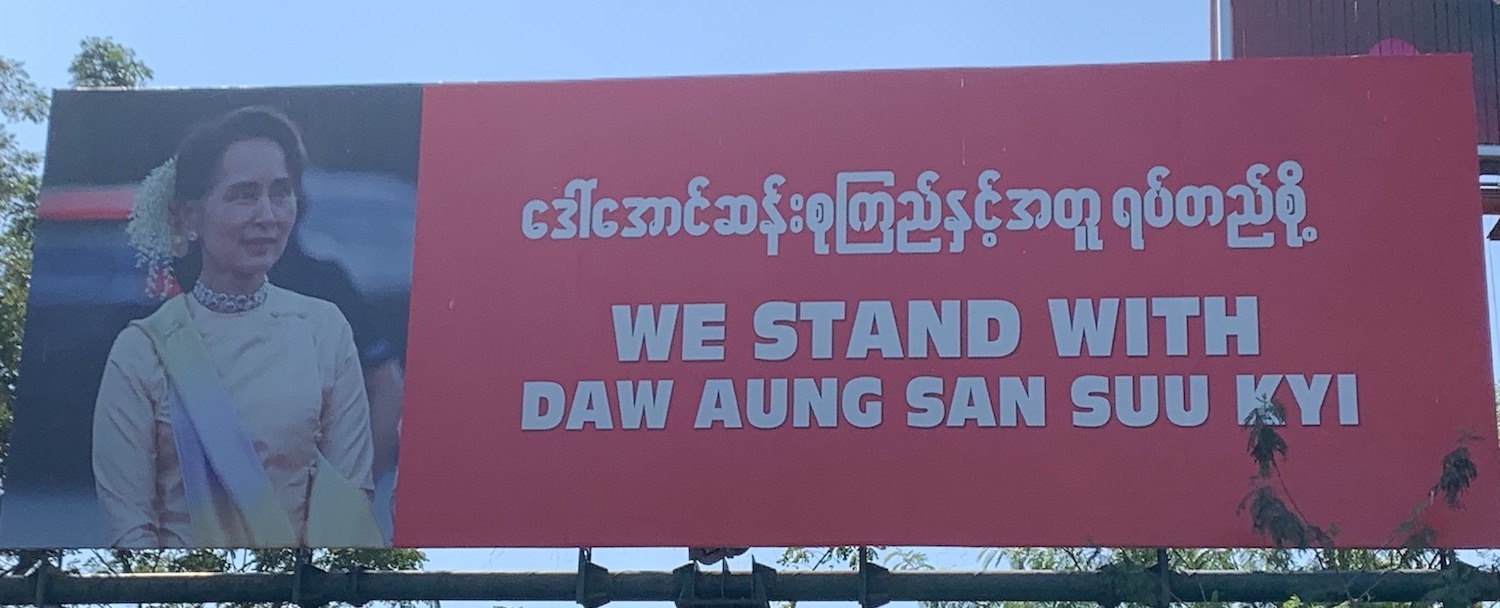Independent travel in Myanmar is in its infancy, as the boycott demanded by democracy campaigners was lifted only in 2012. It is of course vulnerable to the damage of sudden mass tourism, but right now it really has the best of both worlds: exotic, and nowhere near as crowded as other destinations in South-East Asia, but easy to navigate, with new hotels and transport systems, and locals welcoming to foreigners now we have been invited in. So, Mingalaba.

There are certainly some amazing things to see and do. Yangon is rapidly renovating and should soon have a city centre the envy of the region. Bagan is a heritage site to rival Angkor Wat. Mandalay is the cradle of historic culture. And Lake Inle is the place to trek the hills, meet local tribes, and mess about on boats in floating villages.
There are some great places beyond the obvious too. The confected capital of Nay Pyi Taw is wonderfully odd, and down south among other delights you will find the iconic Golden Rock pilgrimage destination, the world’s longest reclining Buddha, and the remnants of the famous Death Railway Japanese forces compelled POWs to build in World War Two.
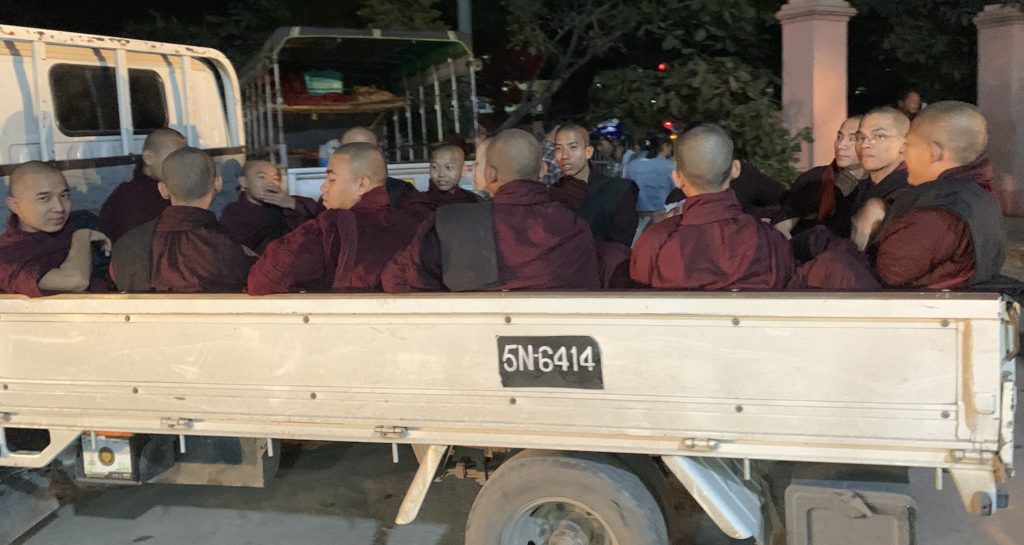
Culturally, Myanmar is more akin to India than Thailand. Take the food, for instance. Mild curries, rice noodles (try classic mohinga), barbecue night markets and other street foods are all very popular. Most men wear longyi, a kind of cotton skirt, and it is very common to see women with thanakha, a pale face cosmetic worn for fun and sun protection. This is a paste ground from bark – you will see people in markets crushing it on stone plates splashed with water – though a powder version is available from convenience stores.
There are three seasons. It is a red hot 40°C from February to May; it rains June to September; and a lovely 33°C (but a bit colder at night in central areas) under permanent ultramarine skies October to January.
The main tourist routes are perfectly peaceful, though the fringes of the country are scarred by localised fighting between government forces and various separatist groups and are off limits to outsiders. This is true of Kachin up north, Shan and Kayin out east, and of course Rakhine in the north-west where Buddhist Myanmar has been accused of committing genocide against the Muslim Rohingya minority. This last fact creates for many travellers a moral issue about coming here, though it is far from simple and in talking to locals you will learn a lot more about this awful tragedy.
Yangon
Yangon’s airport is an half-hour cab ride north of downtown. The journey passes Lake Inya, where from 5am the manicured banks are alive with joggers and open-air gym goers. This area is most notable for its great homes of the wealthy elite, including that where Aung San Suu Kyi was held under house arrest for a total of 15 years between 1989 and 2010.
Yangon may not be the head of an Asian tiger economy, but it does feel like a beautiful butterfly rapidly emerging from its dingy chrysalis, with modern infrastructure springing up amid renovated colonial buildings and relaxed traditional street life after half a century of oppressive military rule.
The Yangon River, running east-west, borders the city in the south. Parallel to it is Strand Road. At one end is the classic Strand Hotel, dating from 1901, with marble floors, high ceilings and lacquer fans; one of my favourite hotels in the world. Try their exquisite Fermented Tea Leaf Salad. At the other is the massive and gradually opening Rosewood Hotel. Between them is the harbour, opposite the imposing Port Authority, the ramshackle Divisional Court rotting away and obscured by overgrown trees, and the scarlet Custom House.
Walking around here and up perpendicular Pansodan Road, the main north-south downtown artery, is to feel the pulse of old Rangoon. Vividly dressed women in conical-shaped bamboo hats loll under fancy patterned parasols on the path among their fruit and veg, and men sit at what Westerners would call “pop-up” cafes of multi-coloured plastic tables and stools under tarpaulin awnings, while haircuts and manicures are given by the side of the street. On Pansodan Road, tucked between betel nut wallahs, dime-store pharmacies and open-air booksellers are some outstanding bars and restaurants. For example, try Sofaer & Co, Rangoon Tea House, and Pansodan Burmese Brasserie. Nearby are the city’s first cocktail bar, Blind Tiger, and Marco’s Cellar Bistro.
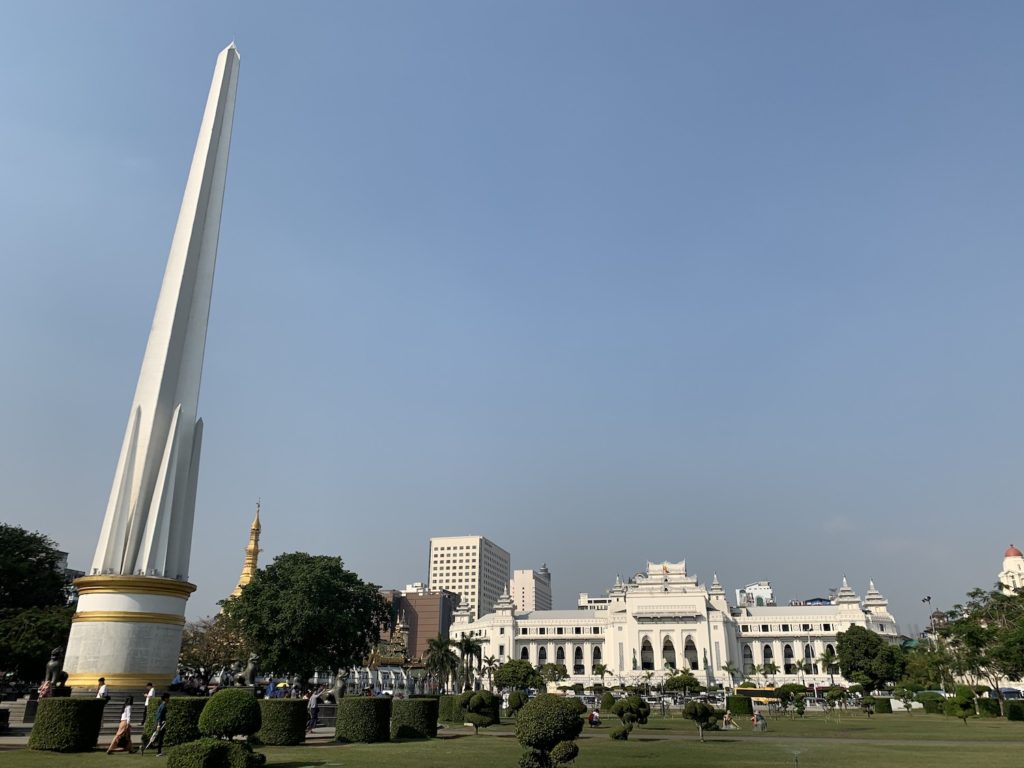
Just to the west is Mahabandoola Garden, laid down by the British in 1868. In the centre, surrounded by exotic topiary, is a tall obelisk, the Independence Monument, which replaced the old statue of Queen Victoria. To the east is the red brick High Court and to the north the bright white City Hall. On the north-west corner is a very busy roundabout, in the middle of which is the Sule Pagoda, originally the dead centre of the city around which the grid pattern of roads was designed.
The area to the east of here is chock full of dilapidated buildings; it is renovating and not long from now will be stunningly returned to its former grandeur. The centrepiece is the red and cream former Secretariat Building spread over seven hectares. From 1905 this was the seat of British rule in Burma. In 1947 it is also where General Aung San was assassinated a few months before independence. He was the leading architect of independence, and is known as the father of the nation as well as the father of then two year-old Aung San Suu Kyi. The complex, where the Union Jack was lowered and the Burmese flag raised on 4 January 1948, and which also housed Burma’s first National Assembly, has been under a US$100m renovation not due for completion until 2024. However, there are already fascinating 45 minute tours, with hard hats and dust masks, that leave the front gate every couple of hours.
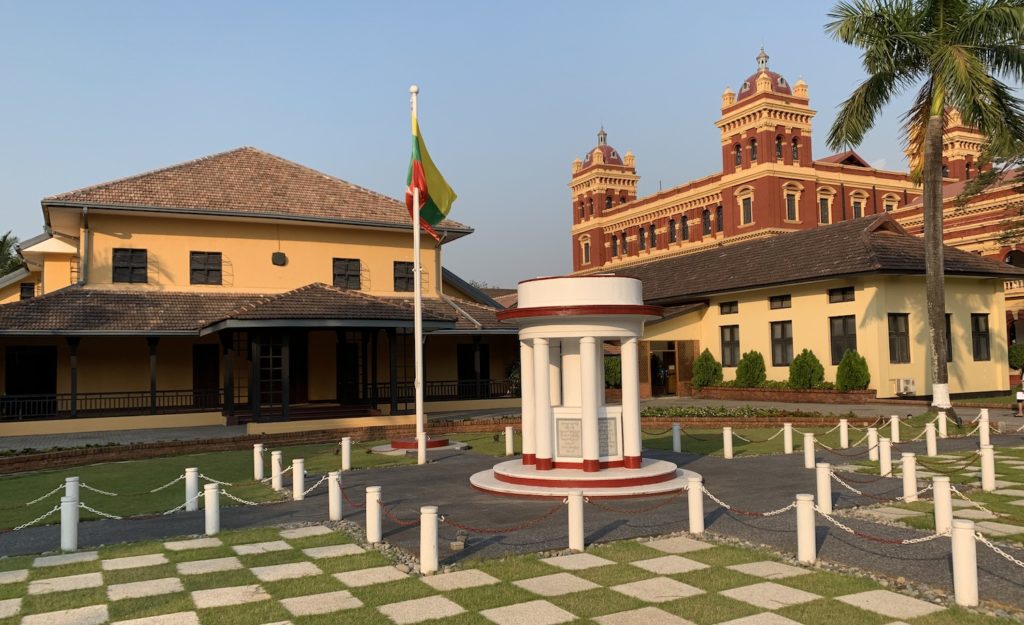
A little north of here is the large Kandawgyi artificial lake, popular for sunset strolls on the perimeter boardwalks, though several are currently closed for repair, around a huge Golden Boat, reflected in the still water.
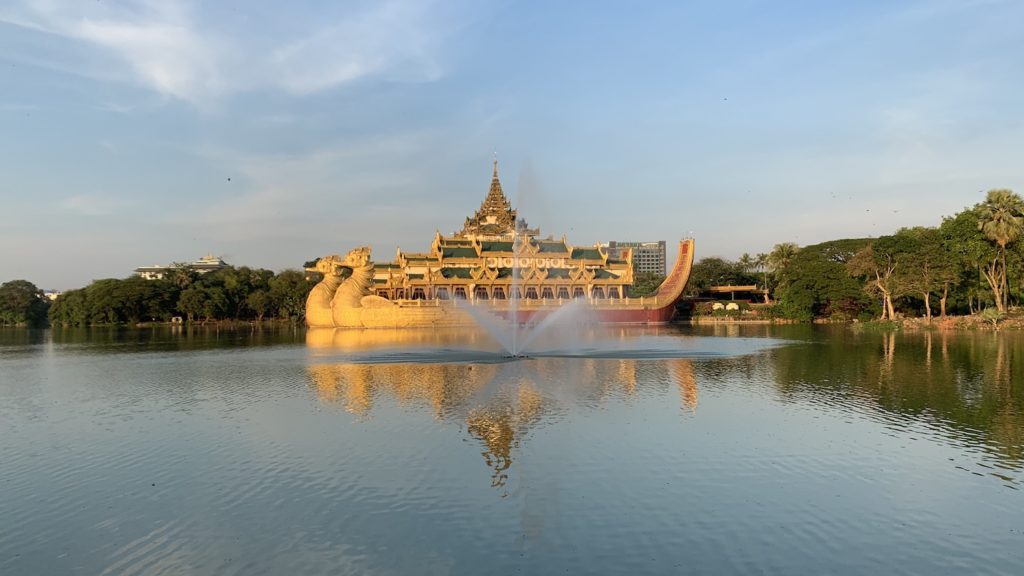
Just west on Singuttara Hill is Yangon’s outstanding feature and Buddhism’s most sacred site in Myanmar: the Shwedagon Pagoda. The 100m-high golden stupa is visible from across the city, giving Yangon a special signature. These cones, like upturned handbells, are a very common sight and one of the abiding memories of Myanmar, but none are as impressive as this.

Opposite the Port Authority is the Nan Thi Da Terminal, which is where the ferry leaves for the five minute crossing of the Yangon River to the village of Dalah. Apart from views back there is not much to see here, but it is the place to flag a motorbike taxi from one of the many touts and head off past wooden houses on stilts with people bathing in the stream for a great day trip.
Twante is a sleepy village 40 minutes west. We visited weavers making longyi on an eighteenth century spinning jenny, and potters throwing their clay on wheels rotated by hand. Inside the small Mwe Pagoda, ninety-nine pythons are tightly wrapped around the Buddha images. We also saw a Hindu temple and a Christian church. And this is the first time we hear local people – in this case our Muslim rider-cum-guide – volunteer their views of the Rohingya people. He brands them as “scum”, a refrain we will hear several times over the weeks.

Tourists often move from Yangon straight to the big sites by plane or occasionally by sleeper train. But we decided to check out the nation’s unknown capital en route to see if it was quite as weird as Yamoussoukro in Côte d’Ivoire.
Nay Pyi Taw
In its own way, it certainly is.
The capital was moved from Yangon 320 kilometres north to the artificial town of Nay Pyi Taw in 2006. The official reason was to escape the congestion of Yangon, though most likely it was for the military junta to feel they could keep better control of the various separatist hotspots on their borders by being closer to the centre of the country.
After all, this land had been plagued by ethnic conflict for centuries under a variety of kingdoms until 1886 when Britain simply made Burma a province of India. British rule here has been famously described by two titans of the English language: Kipling’s “white man’s burden” and Orwell’s “despotism – benevolent, no doubt, but still a despotism with theft as its final object.” The truth is that British colonialism spelled the end of the monarchy, the split of religion from state, and the suppression of guerrilla activity. The economy certainly developed, but hardly for the benefit of local people.
After independence in 1948, ethnic violence returned, followed by military dictatorships in various guises from 1962 to 2010, drawing down the bamboo curtain and undermining both the economy and human rights. Burma became Myanmar in 1989, Aung San Suu Kyi won the Nobel Peace Prize in 1991, and up to that point the story seems tragic but straightforward enough.
To outsiders, Aung San Suu Kyi’s journey since then appears baffling. One of the world’s most feted political prisoners as leader of the National League for Democracy, she was key to the transition from military regime to partial democracy. In 2015 she became State Counsellor, effectively prime minister, with a majority in both chambers of parliament although under a system guaranteeing a veto for the military, the Tatmadaw. Yet her government now stands accused at the UN International Court of Justice in The Hague of perpetrating genocide against the country’s Muslim Rohingya minority in Rakhine State in the north-west bordering Bangladesh. How can one make sense of that?
To insiders, it is simpler. Billboards everywhere proclaim that the country “stands with Aung San Suu Kyi” and it would be a miracle if she is not returned in another landslide in the 2020 elections. She remains the fragile bulwark against military dictatorship and the frangible guarantor of economic stability, but to play those parts it is crucial she is also seen to be suppressing separatist uprisings. In Rakhine, government troops have been fighting two battles: since 2014 against the Buddhist Arakan Army, a conflict that began to displace the local Muslim population; and at the same time during 2016-17 against the Islamic Arakan Rohingya Salvation Army.
To have any understanding of what is going on here, Aung San Suu Kyi’s testimony to The Hague at the end of 2019 is essential reading. In it, she admits there may well have been “war crimes”, effectively by the very army upon whose acquiescence she relies, which she wants to be prosecuted internally, but she denies “genocidal intent”, meaning that her government did not instruct its forces to commit them. The tensions of this argument were always in our thoughts in Myanmar, nowhere more so than in the ersatz capital.
Nay Pyi Taw lacks the architectural attractions of Brasilia, and has even lower population densities than say Abuja, Canberra or Islamabad, so no wonder almost all the foreign diplomats have dug in and refused to leave their cosmopolitan lifestyles in Yangon. Really the only people to come here are those meeting government agencies, and those locals we met were shocked to see us here. We were the only white people on the plane, but it is definitely worth coming for the idiosyncrasies.
Nay Pyi Taw is planned in various zones: military, ministry, diplomatic, recreational, shopping, hotel and residential. In the residential zone there are just over 1,000 four-storey apartment blocks, their roofs colour-coded according to the workplaces of their allotted residents: blue for Ministry of Health employees, green for Ministry of Agriculture and so on. Higher ranking officials live in a total of about fifty mansion compounds.
The hotel zone is in the south, where many of the five-star chains have enormous estates, empty but for occasional business conferences and the odd NGO and foreign dignitary, and therefore shockingly inexpensive. We chose the Lake Garden spread around the northern end of the gorgeous Yan Aung Myin Lake. The government buildings in the centre are hard to access, as is the gothic parliament, shut off behind wrought-iron railings. This is strictly drive-by only; there is no stopping for photos around here.
Brand new highways sweep across the valley from one zone to another without ever appearing to link them together in a coherent single entity. Sometimes they are as much as twenty lanes wide, yet on the weekend we were here our taxi was often the only vehicle on the road, save for the occasional bullock cart.
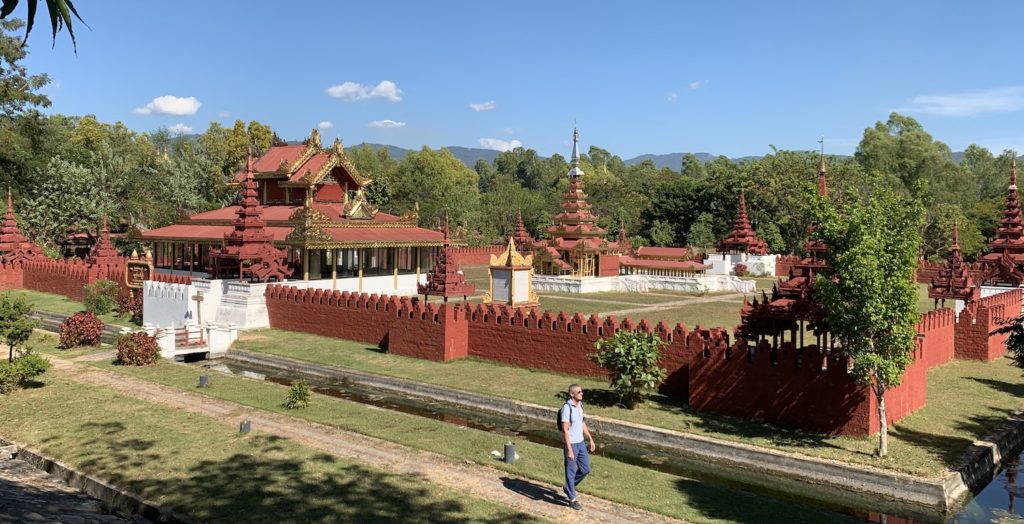
In the north is the National Landmark Garden. This vast park is divided into a map of the seven states of Myanmar. You take a guide in a golf cart for a couple of hours to drive past miniature replicas of the major pagodas and palaces of the country. In fact, the miniature of the Schwedagon Pagoda is easily ten metres tall and about the same size as hundreds of golden spires you will see at the side of the road all around Myanmar.

A much bigger stupa is to be found at Uppatasanti Pagoda. Opposite here are half a dozen fabled white elephants. These albinos are rare but not actually a separate species. Legend has it that the Buddha’s mother dreamed of a white elephant presenting her with a lotus flower, which is why they became treated in Myanmar as too sacred to be put to work and were later viewed by Western colonialists as an expensive extravagance.
Bagan
Bagan is an UNESCO World Heritage Site, the largest archaeological zone on the planet, 13x8km, on the east bank in the elbow turn of the Irrawaddy River. This is one of the outstanding highlights of South-East Asia: concentrated here, 4,500 Buddhist temples were built between the ninth and thirteenth centuries, of which 3,800 remain today, despite occasional earthquake damage, most recently in 2016 and 1975.
The whole area is a flat plane, a bush of brown grass and sparse trees. Almost wherever you are, there will be a score of temples within a stone’s throw and you will be able to see the tops of dozens or even hundreds more. There may be few individually impressive enough to stand as major attractions alone, and inevitably they start to blur after a while anyway, but together they are extraordinary.

There are only two places to sleep within the town walls of Old Bagan, right on the water in hearing distance of the constant put-put-put of boats plying the Irrawaddy: the River View Hotel and the Thande Hotel, both three star. Just outside are the slightly better Thiripyitsaya Sanctuary Resort to the south and Aye Yar River View Resort to the north. There are plenty of other places as well as bars and restaurants in the towns of New Bagan 5km south and Nyaung-U 10km north-east.

Your hotel will sort you one of several transport options to tour the area: horse-and-cart, pedal-bike, electric-bike, moped, tuk-tuk or taxi. We found it useful to have a driver familiar with these dusty roads.

The pagodas tend to be very relaxed and informal, with no signage, guides or queues. You are no longer allowed to climb them and you will always have to remove your shoes no matter how uncomfortably stony or baking hot the ground or how far you have to walk, and it can be a bit icky. Of course there is a bit of commercialisation – there are even ATMs at some – but most feel completely abandoned. Those fresh from say Angkor Wat will think Bagan utterly deserted.
It is of course easy to get templed out, but unless you are an archaeologist you are likely to focus on the most important or most unusual while just taking in the scale of it all.

There is a tall platform in the south with fine views, but the best perspective is from a hot-air balloon at sunrise. First thing each morning from a mound just outside Old Bagan, you can see thirty or so clustered together passing directly overhead, silent but for the occasional fire of a burner, looking like a stream of soap bubbles blown by a child.

There are four companies: Balloons Over Bagan, Golden Eagle, Oriental and STT, all much of a muchness since they all take off right next to each other in the same field at the same time. The operators collect you from your hotel, give you a coffee and a safety briefing, then get you up, up and away in a basket with a dozen or so other passengers and a pilot. Impressively, an hour later they all land close together as well, a bit bumpily, where a table with champagne and croissants is hastily erected near each basket.

There are a couple of good short trips out of the archaeological zone too, well off the beaten track. About 50km south is the small village of Salay, where there is a monastery of ornate carved wood among a score or more pagodas in colourful designs. And an hour east is Mount Popa, a rocky hilltop that looks magical from afar though at the top of 777 steps the dozen or so small temples amid plastic bottles and other debris do smell of urine. All the way up there is a constant clatter on the corrugated iron roof as macaque monkeys bound around.
Mandalay
Its very name rings with such exotic echoes that Somerset Maugham claimed nobody should ever go to Mandalay as it could not possibly live up to its romantic promise, though the two greatest writers about Burma took opposite views of this as they did everything else. While the “cleaner, greener” city was of course famously idolised by Kipling in 1890, by 1934 Orwell damned it as a “disagreeable town” with five main products: “pagodas, pariahs, pigs, priests and prostitutes”. I don’t know about the last four, but the pagodas were very much in evidence as we arrived from Bagan by boat on the great Irrawaddy.
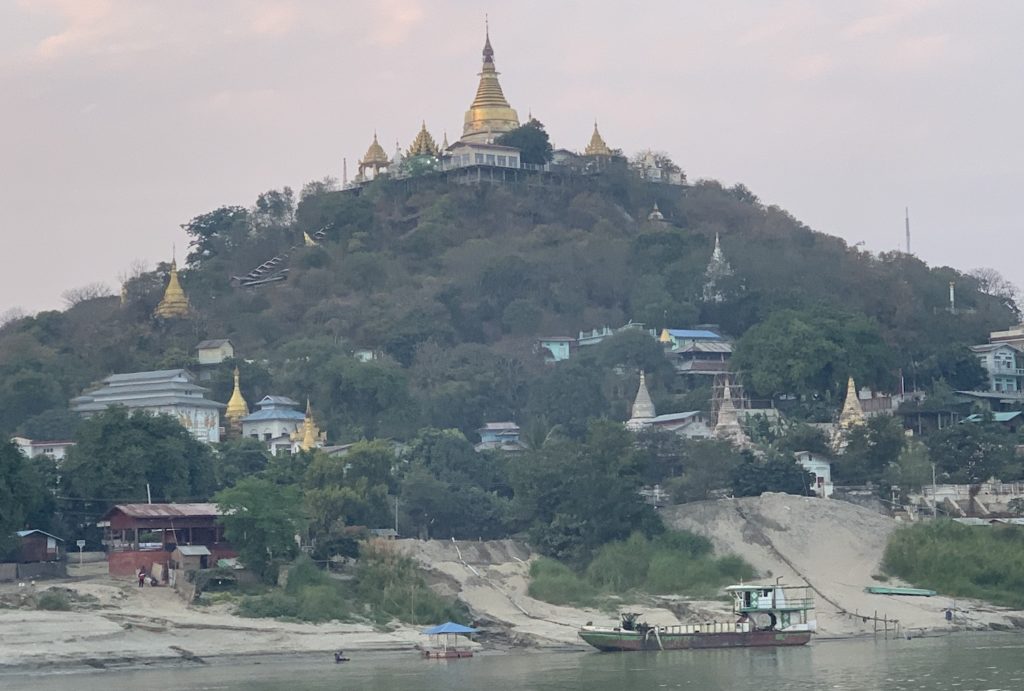
It is 180km from Bagan to Mandalay and it takes four hours by car and more than seven by train. But why rush this scenery when you can take one of the two boats that leave at 5.30am? It takes twelve hours to get here, passing by endless paddy fields, peepul trees and blackish hills, frequently weaving around shallow sections of the wide river; it is two hours quicker coming the other way with the fast-flowing water.
There are two docking points in Nyaung-U, one for the dry season and one for the wet, but both require you to scramble down a sandy bank in the pitch of night, balance on a gangplank next to which a couple of the crew stand holding a long piece of wood at each end to serve as a handrail. The MGRG Express and the RV Panorama seem very similar: a lovely wooden cabin, with forty or so very comfy chairs with lots of leg room, an open deck with sunny views, and a constant flow of food, Myanmar beer and Mandalay rum. Ours was half full, almost all foreigners.
Mandalay feels like a very big city, where the Chinese cultural influences are obvious. Most of what you want to see is compacted around the north-east corner, not far from the Mercure Mandalay Hill Resort. The centrepiece is the 400 hectare Royal Palace, taking up a huge square slab of the city map. Much of the original built in the 1850s was destroyed by allied bombs in WWII so sadly this is a replica from the 1990s but even so the miniature in Nay Pyi Taw does not do it justice. There is a wide moat, imposing bright red walls, soldiers on duty at the main gate, and restricted areas of military buildings in the forests. In the middle are the red roofs of the pagodas, watchtower, residence and meeting rooms all set around courtyards buzzing with locals keen to take selfies with the few foreigners about.

There is a good view from the main gate down the moat to Mandalay Hill on the edge of the city, the only non-flat bit of land for miles around. You can walk up between the two giant half-lion-half-dragons that guard the path, on snaking steps under its iconic red tin roof, or you can drive. At the summit sits Su Taung Pyai Pagoda with golden mirrored walls looking back down on the Royal Palace and across the city.

At the foot are several monasteries and pagodas, most notably the bright white Kuthodaw, with 729 stupas holding what is known as the world’s largest book.
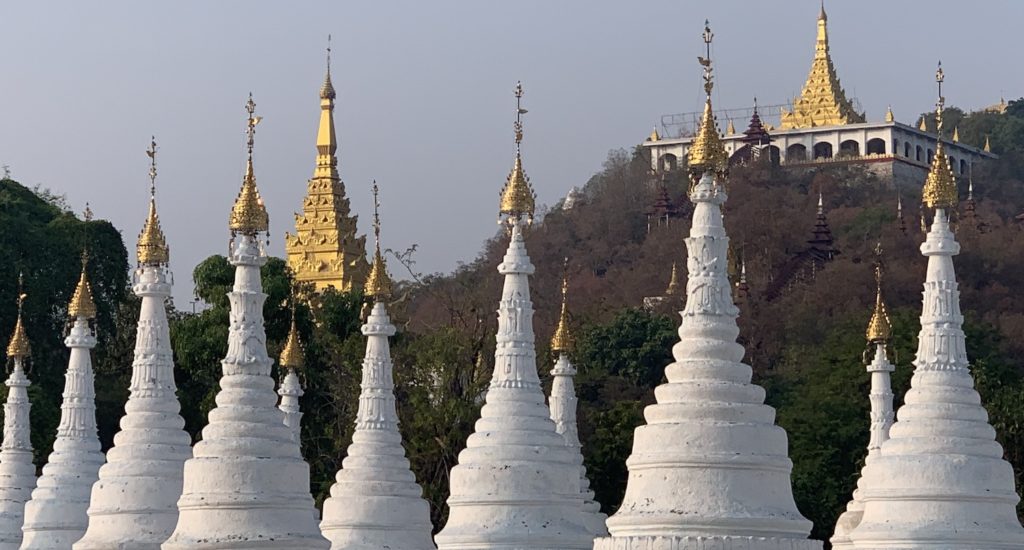
Mahamuni Pagoda is back south in the heart of downtown. The golden Buddha here is the second most sacred site in Myanmar. Not far away, spreading out from the Chinatown night market at 34th and 76th streets, is the area to eat and drink.
Mandalay is lauded as the home of Myanmar culture and one art form, dating back to shows at the royal courts, is puppetry. Performances were not just for entertainment but also to inform people about current affairs and display local customs. Puppetry declined with the collapse of royalty but in the past three decades it has been revived. The best place in the country to see it is at the cute Myanmar Marionettes Theatre where you can also buy authentic 1m-tall 2kg-heavy beautifully carved and painted wooden puppets from the performances, for about €125 each, rather better than the cheap ones you see at tourist attractions all over the country.
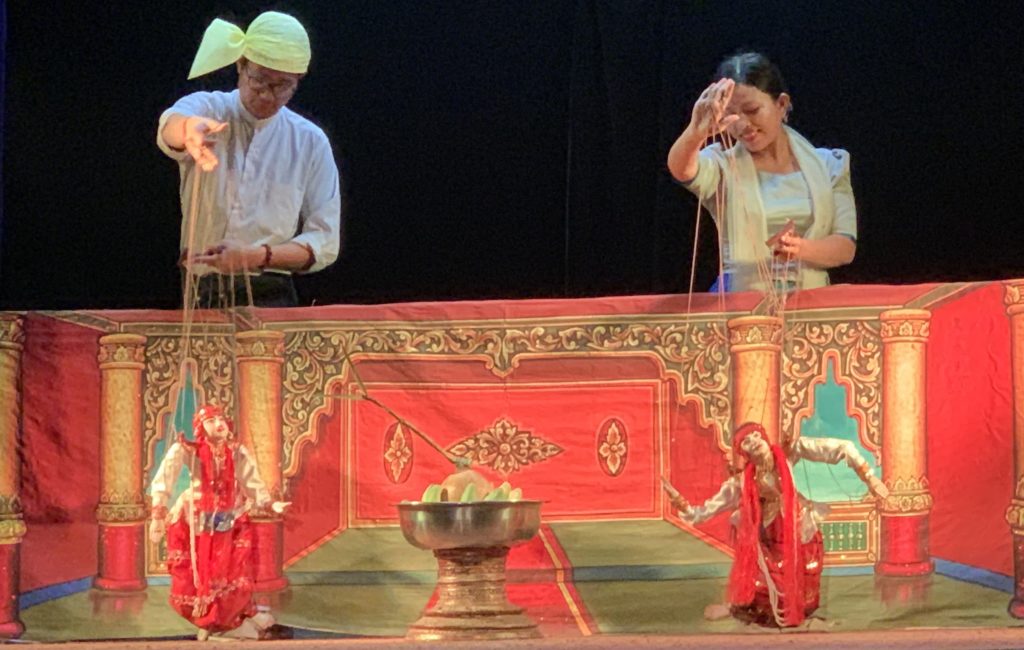
Another important, and very odd, spectacle in Mandalay is the Moustache Brothers’ anyeint or vaudeville act. Although only one of the three is alive now, the Brothers have been performing in the garage of their house on 39th between 80th and 81st for more than thirty years. A small stage is erected every evening among the bikes and walls covered with posters and newspaper cuttings (including from when Aung San Suu Kyi was here). There is some traditional dance, but this is mostly political monologue. The Brothers’ campaign against the military regime was taken sufficiently seriously that two of them, U Par Par Lay and U Lu Zaw, served almost seven years in jail after a performance at the home of house-arrested Aung San Suu Kyi in 1996, and specifically for this joke: “You used to call a thief a thief, but now you call them a government servant.” This is alternative comedy with more than a little bit of politics.

Mandalay is on the east bank of the Irrawaddy. On the west are the ancient Buddhist villages of Mingun in the north, and Sagain in the south. There is a boat to Mingun from the Mandalay ferry terminal that leaves at 9am, taking an hour, returning at 1.30pm. Or you can drive the long way round across the bridges down south, picking up other sites along the way.
In Mingun there are several important pagodas as well as various half-finished monuments, all close to the bank not far from where the boats dock. In Sagain the Swam Oo Ponnya Shin Pagoda is at the top of the hill that you first see coming by boat from Bagan. It has a panorama across the bridges, over the forest of pagoda spires, beyond the sandbar and the river to the city of Mandalay. Near here is a brilliant row of Buddhas at the U Min Thonze Pagoda.
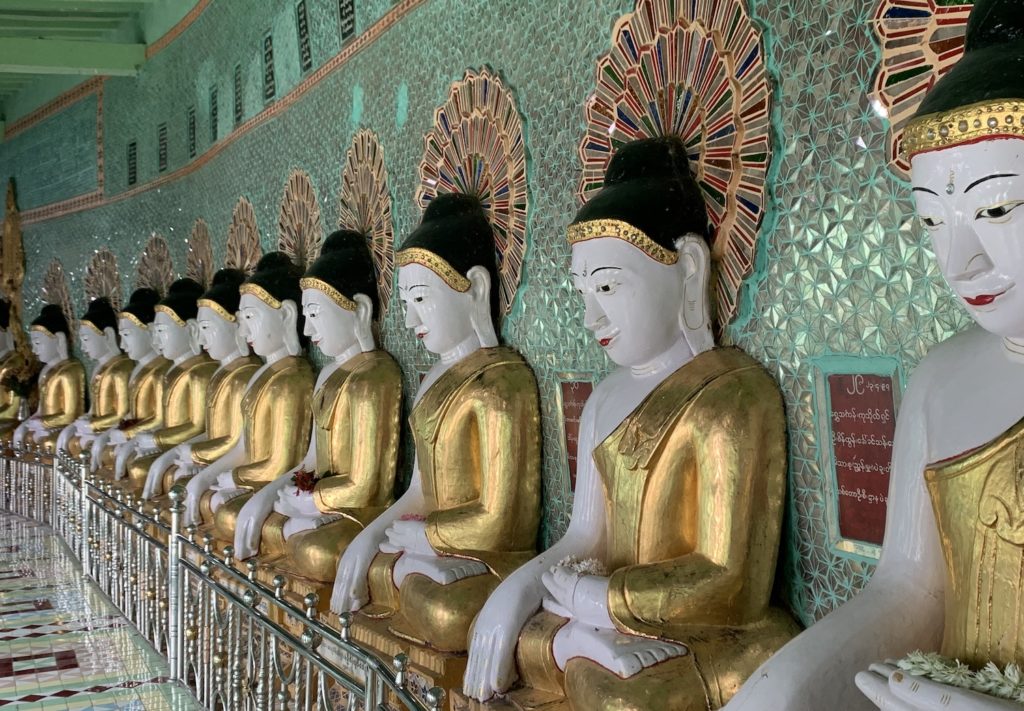
Back on the east bank just south of Mandalay proper is the ancient imperial capital, Inwa. To explore that you have to take a small boat across a tributary and then jump in a horse-and-cart through paddy fields and banana plantations on a lovely circuit that takes in a couple of monasteries, several pagodas, and the ruins of the old city.
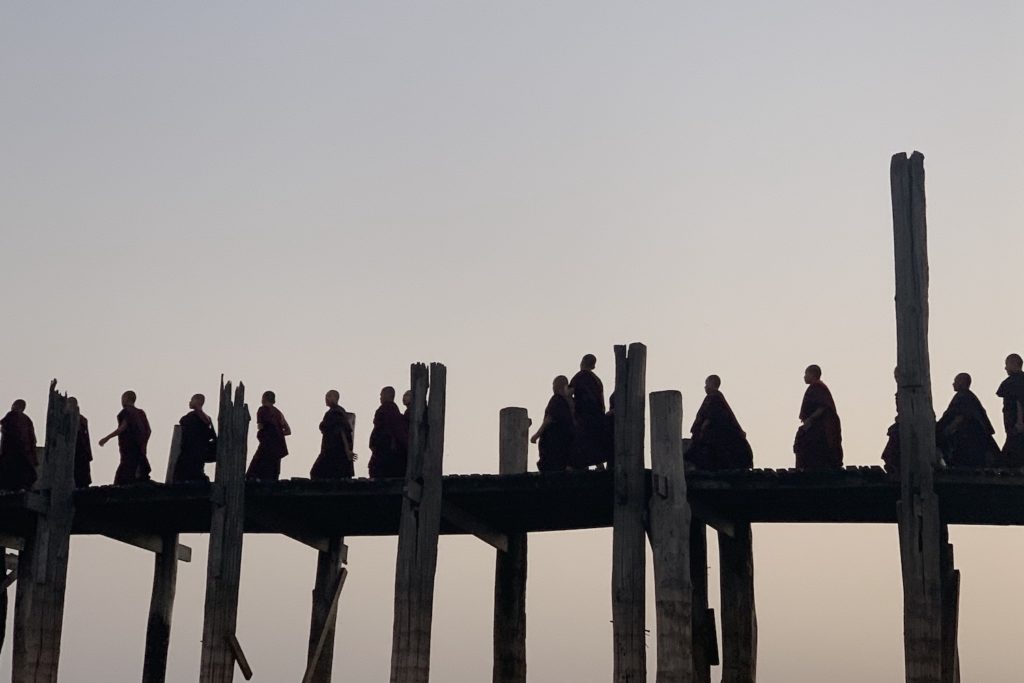
Heading back north towards downtown Mandalay is the district of Anapura, where the main attraction is the world’s longest teak bridge, the U Bein. Regardless of this odd fact, it is a magical place at sunset. Hundreds if not thousands of monks and locals promenade over the 10m-high rickety bridge, with loose slats as footboards and no handrails. It is a good place to watch the sun go down but it is better still to be the other side of the bridge and catch it in silhouette as the sky turns orange. This can be from the land or you can hire one of dozens of boats that shoot out to get the best angle.
Lake Inle
It is only fifteen minutes by plane east from Mandalay to He Ho and another hour by car to Nyaung Shwe, the bustling gateway to the hauntingly beautiful Lake Inle, serene and silvery, especially in the mornings. All around here, notably from the town of Kalaw, is trekking territory, taking in not only the gorgeous hills of teak trees but also with opportunities to meet some of Myanmar’s 135 different tribes and ethnic groups.
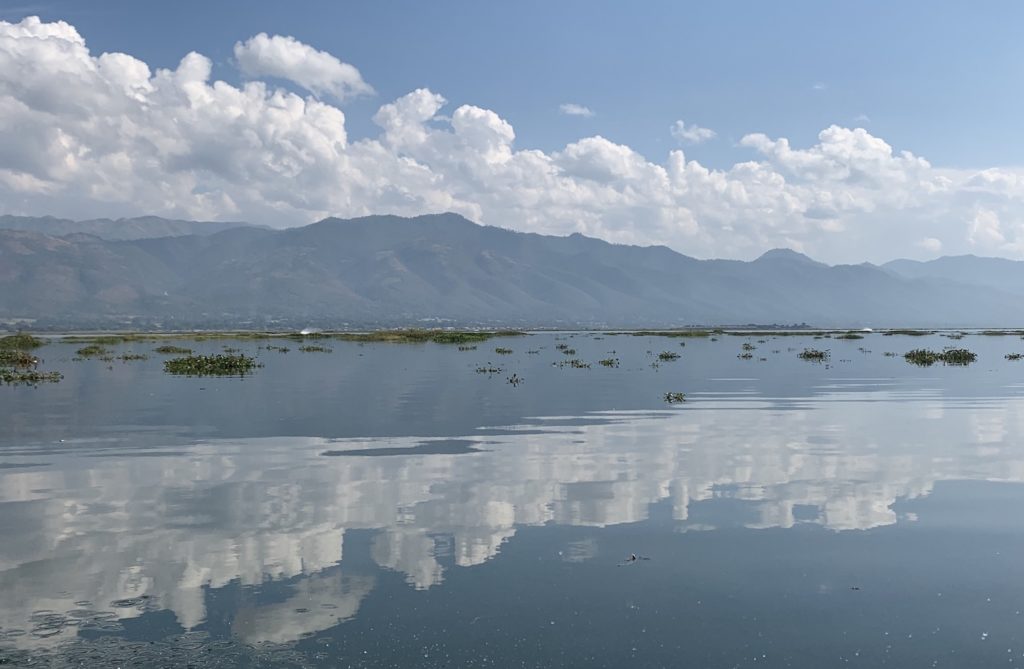
Probably the most famous is the Kayan Lahwi, whose women are known for wearing brass rings to elongate their necks. This starts at the age of nine, then the rings are changed at 19 and again at 25 after when they are never removed. There can be as many as twenty-five rings, weighing as much as 8kg.
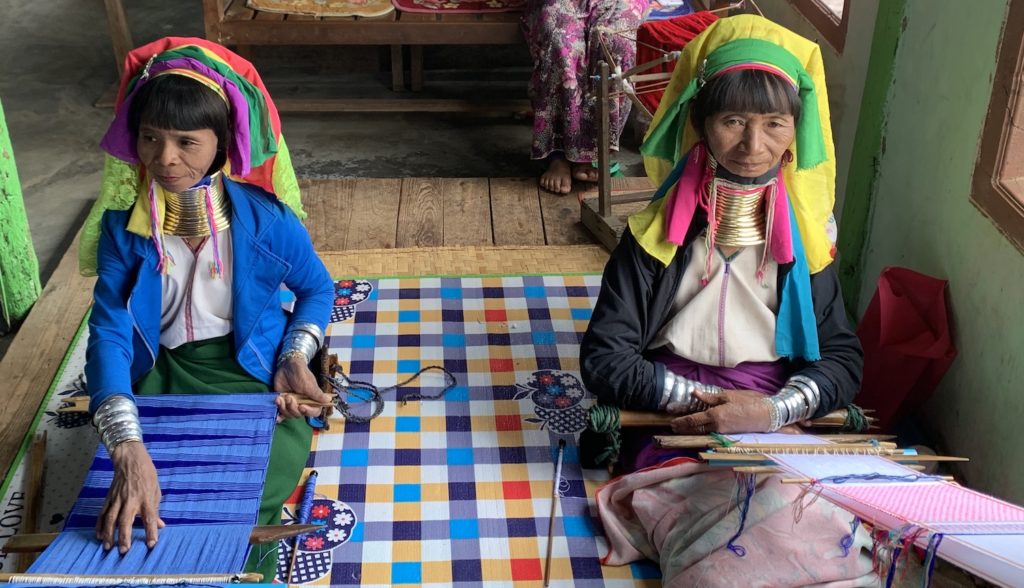
On the lake itself fishermen of the Inthar tribe row their boats by the use of one leg, allowing both arms free for casting their nets as well as for posing with their cone traps for tourist photos.
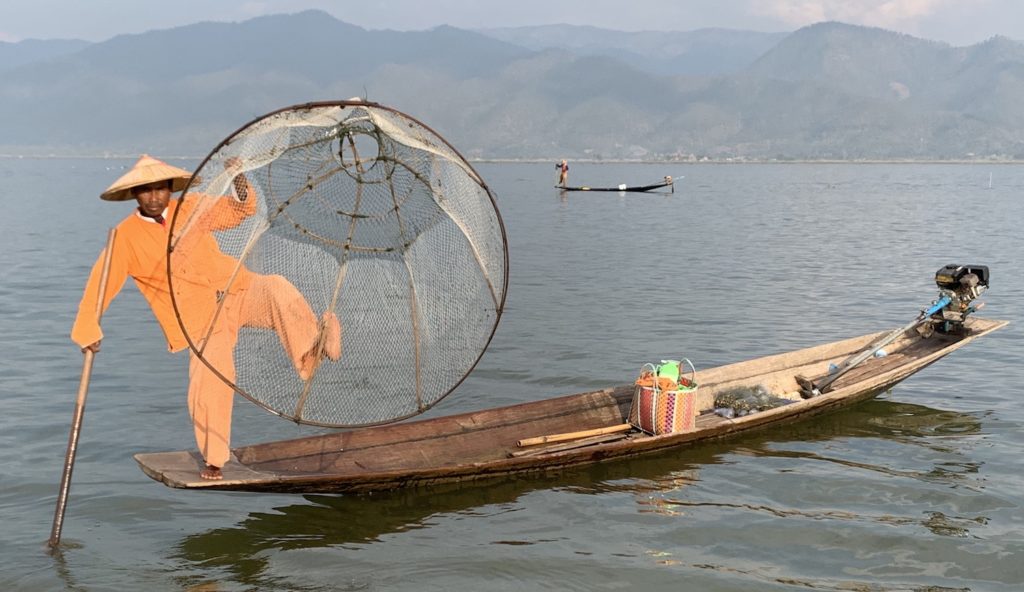
There are several charming hotels on the shores of the lake, reached only by boat from Nyaung Shwe. We stayed at the Ann Heritage Lodge half way down the west coast. They will arrange the hire of traditional boats with long-tail motors for touring the villages in the mangrove shallows.

These villages are not like mini-Venices with canals around squares. There are no streets, almost no walkways whatsoever, only water, on which teak houses, schools, shops, restaurants, temples, post offices and so on have all been lovingly constructed on stilts, creating gorgeous communities to sail through.
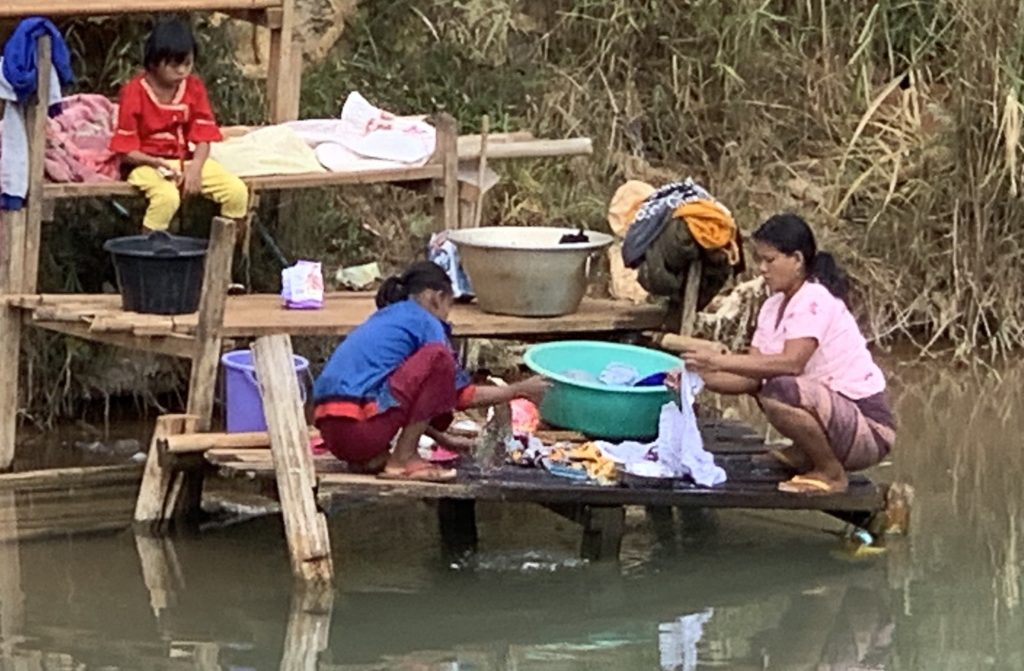
Bathing, laundering, gardening; life all happens on the water with boats put-put-putting about.

It is true there are also some commercial stops that visitors often complain about, But these people need to make a living, and it is no hardship watching silversmiths, boat-builders, cheroot-makers, and weavers creating garments from lotus stems (ten times more expensive than silk apparently: €450 a shawl and €150 a scarf).
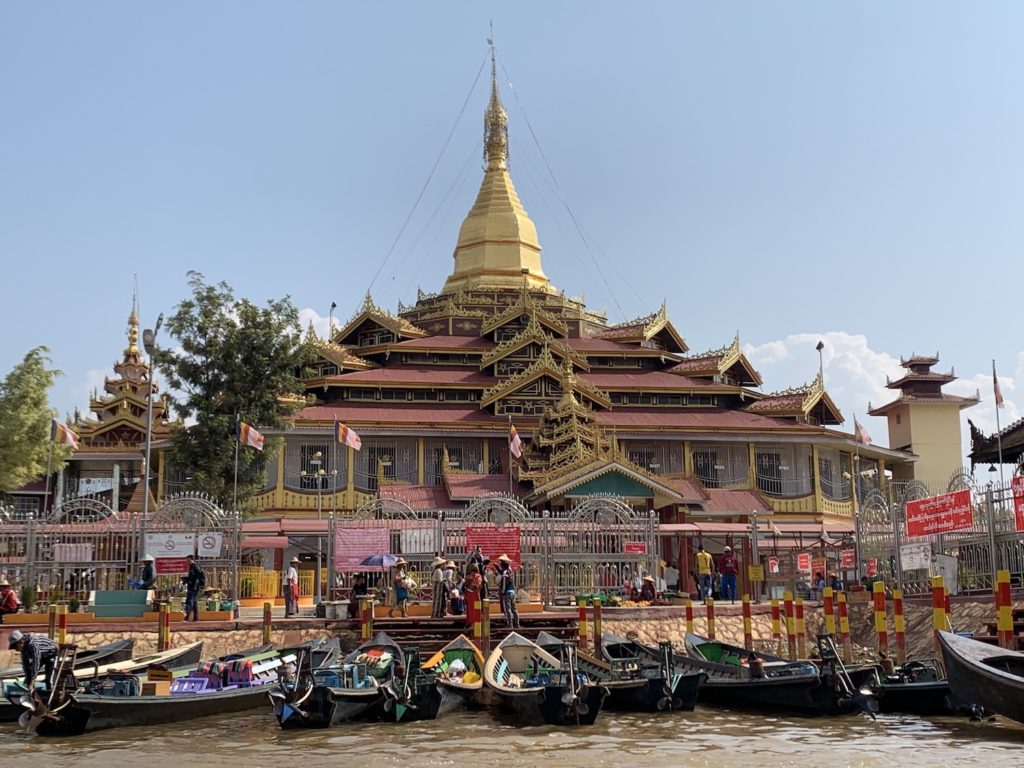
There are of course several monasteries and pagodas.
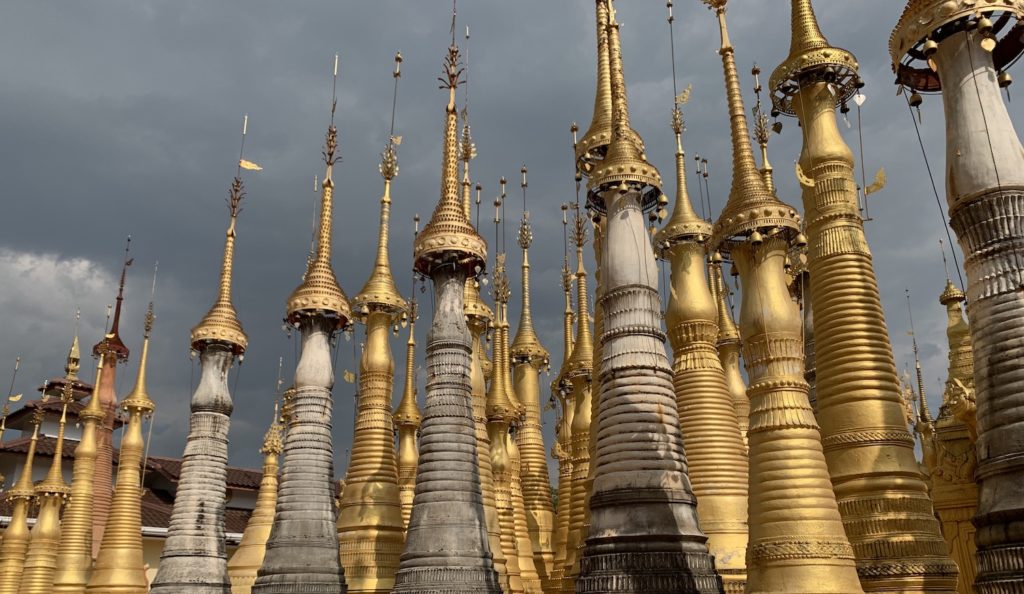
One especially wonderful example is the Shwe Inn Tain Pagoda Complex, where hundreds and hundreds of small stupas are tightly-bunched higgledy-piggledy.
It is not possible to go east of Lake Inle because of fighting in Shan State.
The South
South-west of Yangon is the Irrawaddy delta, with beach resort retreats at Chaung Tha and Ngwe Saung. South-east is the long pan-handle, rarely visited but home to many fabulous attractions. A train journey in Myanmar is an essential experience and we took one to Bago, the gateway to the south-east, just 70km from Yangon. There are two classes: upper with comfy chairs, and ordinary with wooden benches. We took ordinary for K600 or 30 cents each.
We left our luggage with the friendly Station Master on the platform at Bago and zipped around the local sights in half a day. The big four-headed Buddha images at Kyaik Pun Pagoda and the even bigger reclining Buddha at Shwe Tha Lyaung are impressive, though they pale in scale by comparison with what is to come.
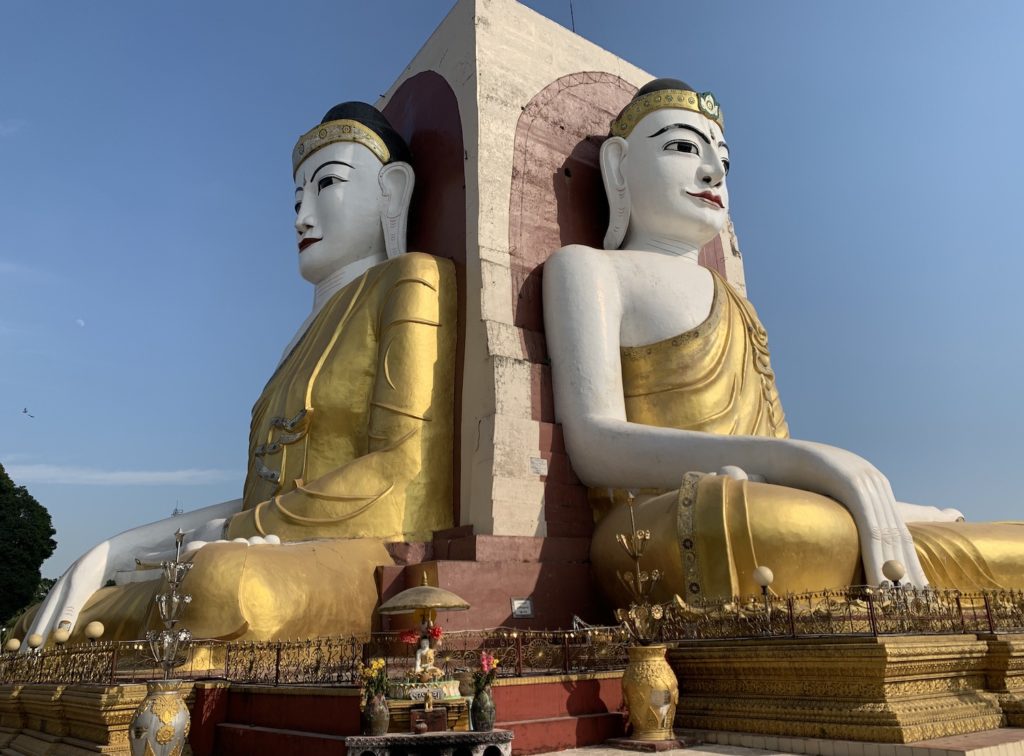
It is two and a half hours by cab east to Mount Kyaiktiyo, home of the Golden Rock, third most sacred site and one of the most fun tourist attractions in Myanmar. To get there you have elbow, shove and fight your way onto one of the scores of comically overcrowded old trucks that depart from the base camp town of Kinpun. It is a bumpy 45 minutes up to the top.
There are places to stay all around, but as the highlights are sunset and sunrise it is best to sleep in one of the three hotels at the top: Yoe Yoe Lay, inside the complex itself, or Kyaik Hto and Mountain Top both near where the trucks shed their human cargo into a sea of people. Locals vie to carry your luggage on their backs or transport the infirm on makeshift sedan-chairs fashioned from deck-chairs strapped to bamboo poles.
We had seen so many copies of the Golden Rock in miniature, not just at Nay Pyi Taw but all over the country, that the small scale of the original was a surprise. A 7m stupa has been built on top of a granite boulder perched precariously on a rocky cliff edge. According to legend, it is blocked from rolling down by a single strand of the Buddha’s hair; maybe, but it certainly seems to defy gravity. Pilgrims surround it on purpose-built courtyards and balconies, and men only are allowed in groups of 20 or 30 to cross a short bridge over an abyss to touch, kiss and fix small squares of gold leaf onto the face of the rock.
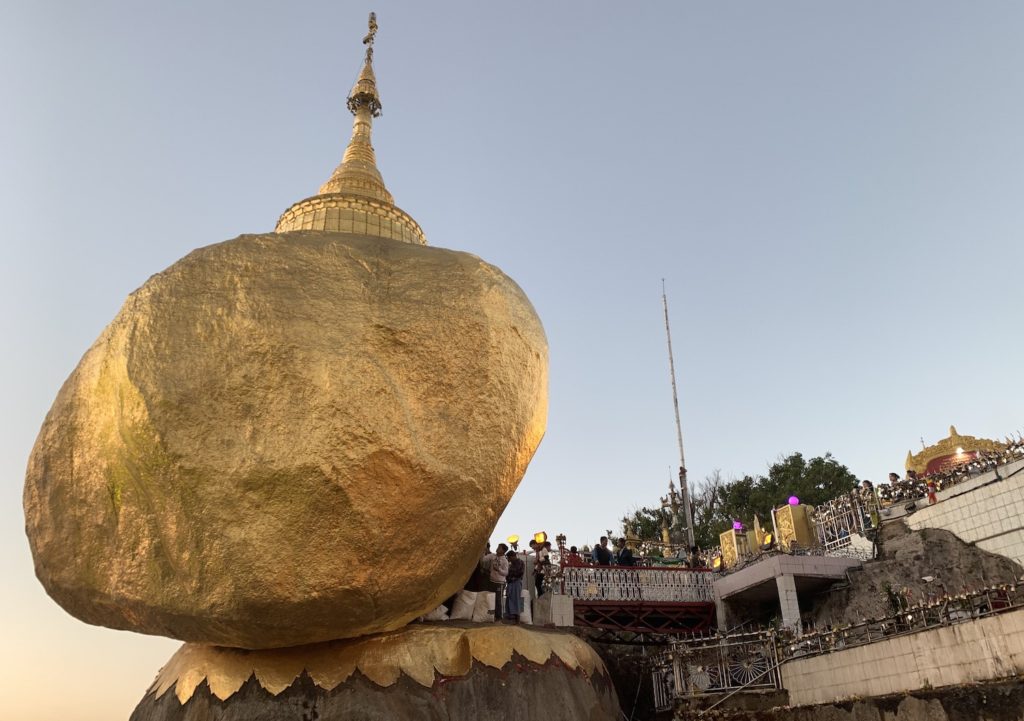
We were lucky enough to be here on Saturday 4 January, Independence Day, on the long New Year weekend, when tens of thousands of pilgrims were hunkered down kneeling, praying, chanting, lighting candles and incense, or sitting eating from tiffin boxes, and sleeping over, spread across the concrete floors on rugs and under tents. We were no more than a score of foreigners among them. It was a magnificent chaos of vivid colours, spiritual noises, and rather pungent odours. The following morning after sun up it was like tiptoeing barefoot through the aftermath of Glastonbury.
Very few tourists make it further south than here, maybe because of fears of Karen separatists who are fighting in nearby Kayin State. But as long as you stick to the main routes you are quite safe. And there are several unmissable things to see.
Two hours south is the village of Hpa-an (the H is silent), which has a pleasant night market, where you select colourful skewers for BBQ, around a pretty lake, where there are also several hotels. It is easy to flag a tuk-tuk for the day to explore the mountains riddled with caves that have been turned into gorgeous Buddhist shrines. There are also Buddha images on lakes and in parks, such as the pagoda atop a slender finger of rock at Kyauk Kalap and the 1,150 larger-than-life effigies at Lon Ba Ni Gardens near the bottom of the two-hour climb up Zwe Ka Bin Hill. The star turn is Saddan Cave, big as a battleship, bulging with bats and Buddhas. Its minerals are claimed to possess medicinal properties that can heal anything from phobic anxiety to cystitis and flatulence.

Mawlamyine is 300km from Yangon. ten hours by train, six by car, one by plane. We travelled between Hpa-an and Mawlamyine in the best way possible: by chartering a traditional boat, with two crew, two armchairs plonked in the middle, and a toilet built over the long-tail propeller at the back. It took five hours of loud put-put-putting, plus an hour stop at the impressive Taik Kyaung monastery, which we reached by a motorised trishaw common in these parts. The Than Lwin River is the longest in Myanmar, flowing all the way from Tibet, as wide as the Irrawaddy. Chugging past fields of bananas, occasional pagodas, and relishing the sunset was a real high spot of this trip.
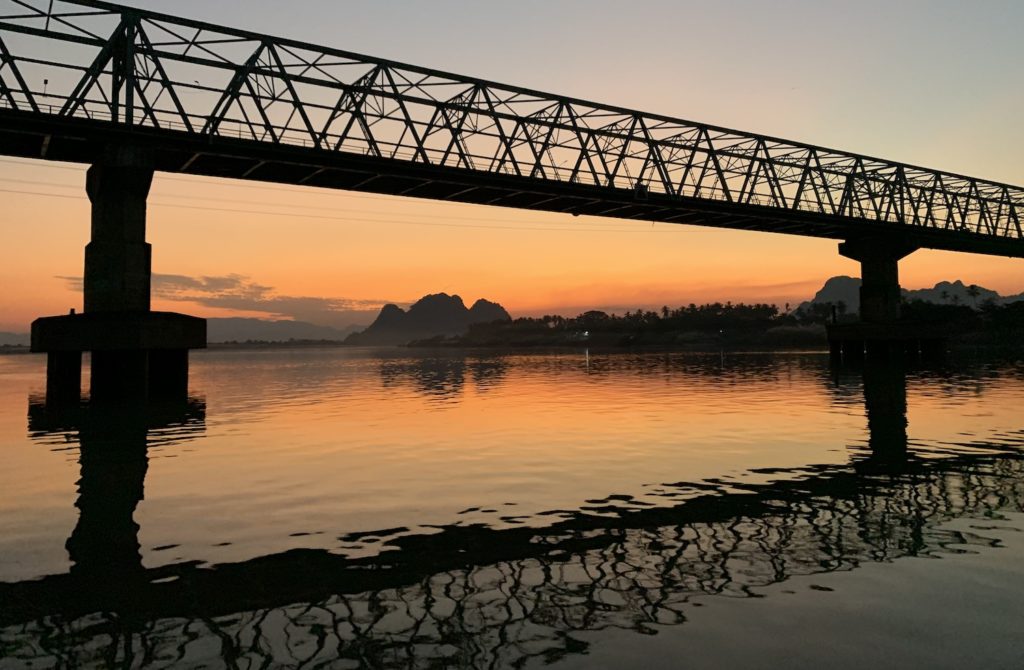
Orwell’s mother was born in Mawlamyine, where there are a couple of pagodas up the hill, including one that apparently inspired Kipling’s Road to Mandalay. It has a relaxed atmosphere and a night market BBQ along the river walk facing the island of Jagwa, the size of Singapore, where you can pay villagers to have your photo taken in their sunflower fields.
Mawlamyine is the base for day-trips to explore a little further out. Heading east not far from the Thai border you will come across Kyaikmaraw Pagoda, which has the only Buddha in the country siting in what is called a European position, as if on a chair, rather than with crossed-legs. The drive south then takes you along wonderful avenues of sugar palms, by dry paddy fields, and through forests of rubber trees planted in symmetrical formation, all gently turning autumnal orange.
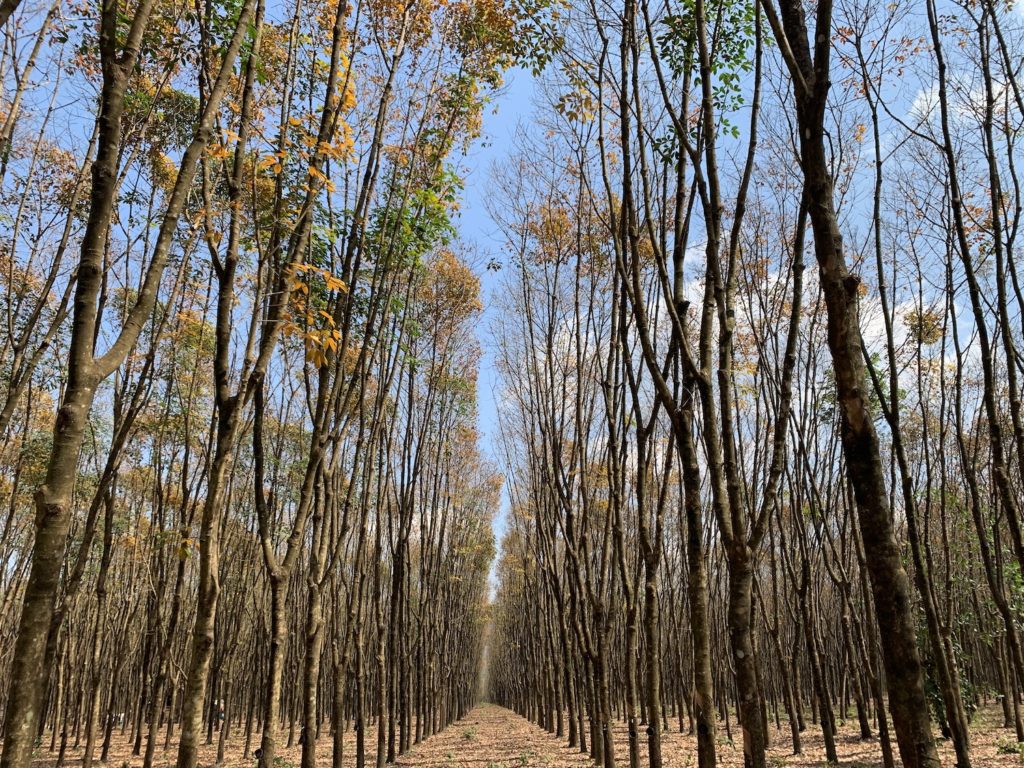
There are several huge Buddhas on both sides of the side of the road – though nothing to what is coming – as well as pagodas improbably balanced on top of rocky outcrops.

By now, we had seen many impressive and substantial Buddhas. But nothing had prepared us for the simply breath-taking sight at Win Sein Taw Ya. In the middle of the jungle, with separatists fighting government forces just a few miles down the road, a line of 500 2m-tall blood-red images of Buddha usher you towards the Zina Thukha Yan Aung Chanther Pagoda. This is the longest Buddha in the world, built in 2010. It is 180m, the length of two football pitches. In the picture, for perspective you can just make out a worker standing on its right forearm. What’s more, just opposite they are currently building one 275m long.
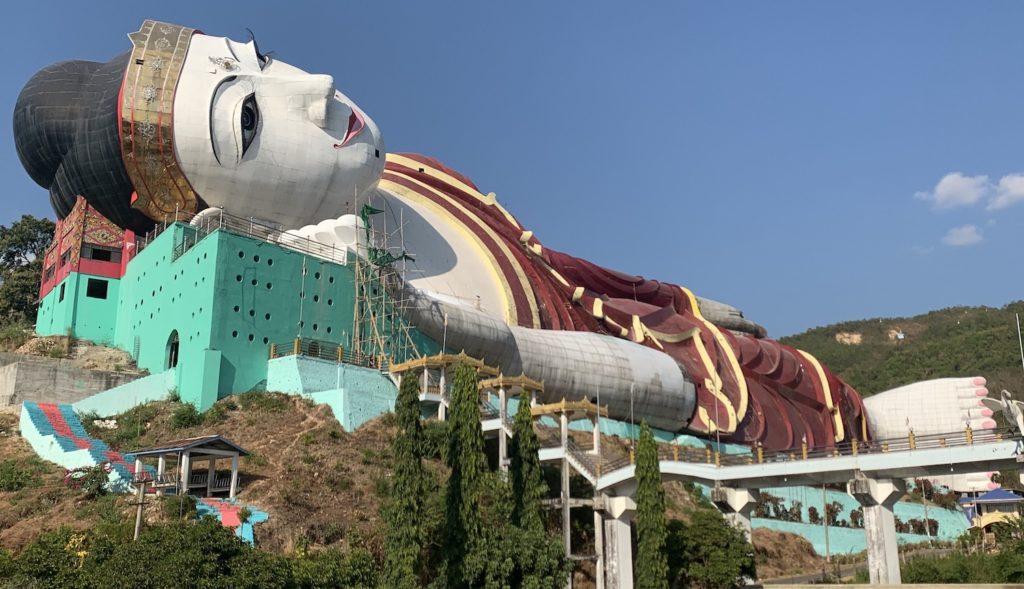
Near here is the start of the infamous Death Railway at Thanbyuzayat. Tens of thousands of Commonwealth, Dutch and American service personnel held as Japanese POW were forced in 1942 to help build a 400km railway through the mountains to link Bangkok with Rangoon. The aim was to open supply lines for advancing Japanese troops expanding their Greater East Asia Co-Prosperity Sphere. In Burma, that extension began here, where a POW base camp was established. At the height of construction more than 60,000 POWs worked alongside 200,000 forced local labourers suffering from mistreatment, malnutrition and malady.

This enterprise is recorded in David Lean’s masterpiece Bridge On The River Kwai and we spent much of our time in the museum whistling the defiant Colonel Bogey March. The line was completed in October 1943 despite regular Allied bombings. By then more than 12,000 POWs and as many as half the local labourers had perished. The very moving War Memorial, laid out in regimental order, was opened in the 1960s after human remains were brought together from isolated sites along the northern half of the railway. Today 3,150 Commonwealth and 600 Dutch are commemorated here.
Further south still is the remote Myeik archipelago. The best way to explore these coral islands is on a dive liveaboard that can be arranged from Renang in Thailand.
As there are so many new and exciting countries to go, I usually leave an adventurous destination I have really enjoyed with a sentimental sadness it is unlikely I will ever see it again. Very rarely do I feel so strongly that there is more to see, that I would like to check on its development, that I don’t feel ready to end our acquaintance yet. I am pretty sure we will be back to Myanmar.
